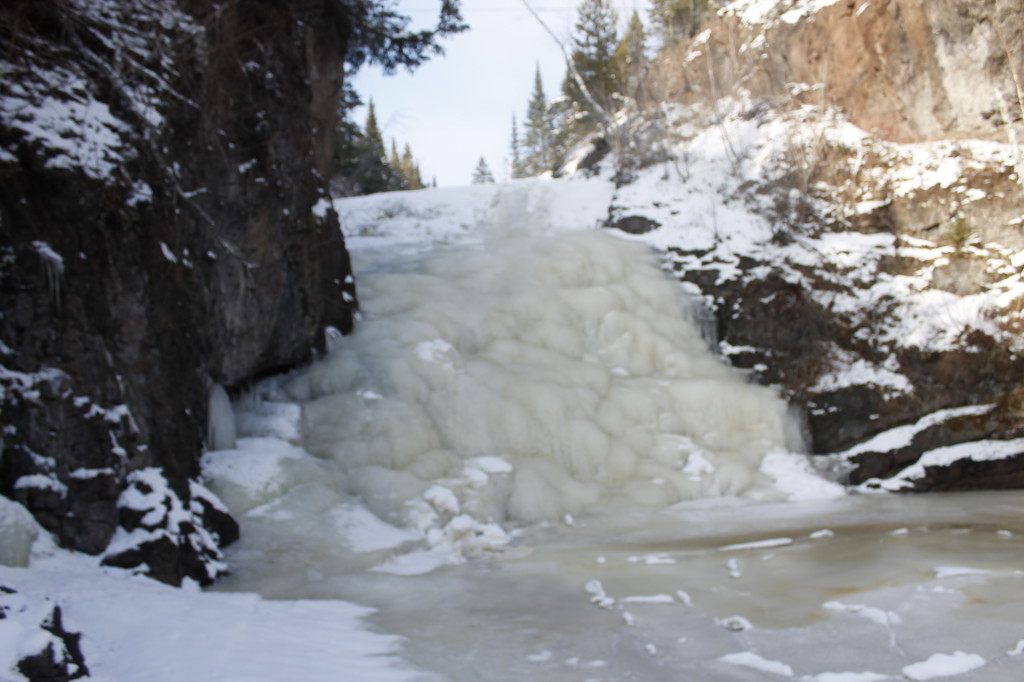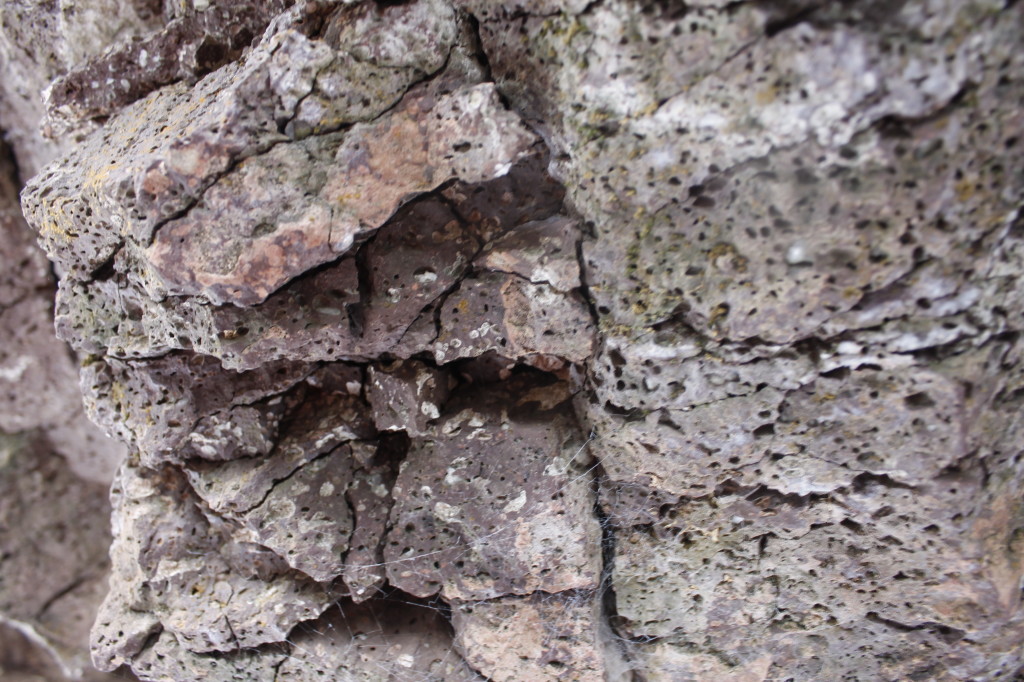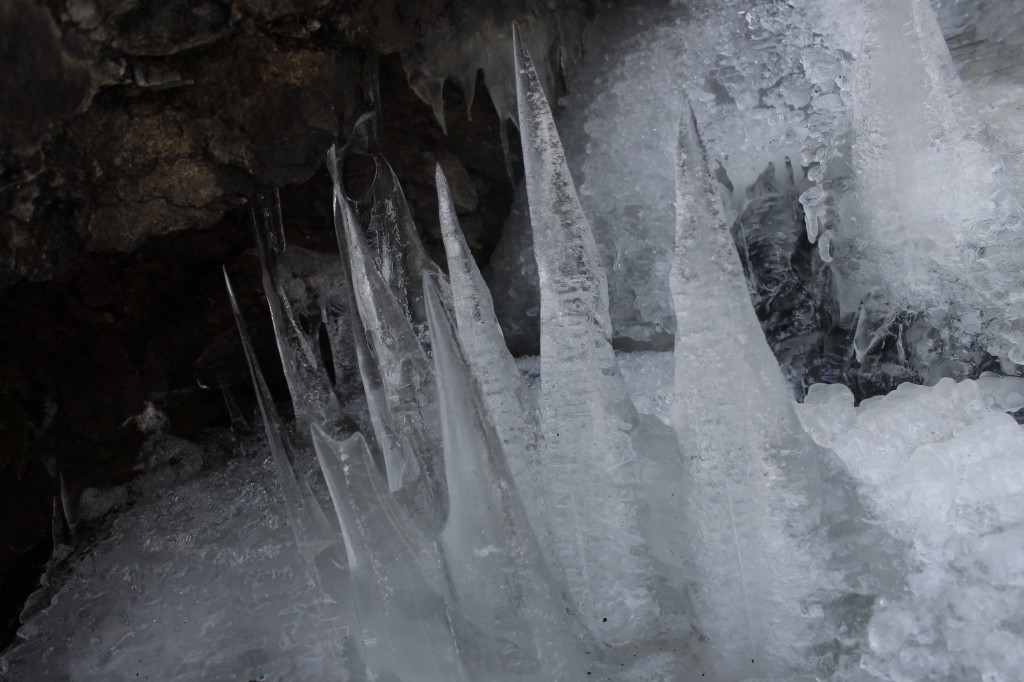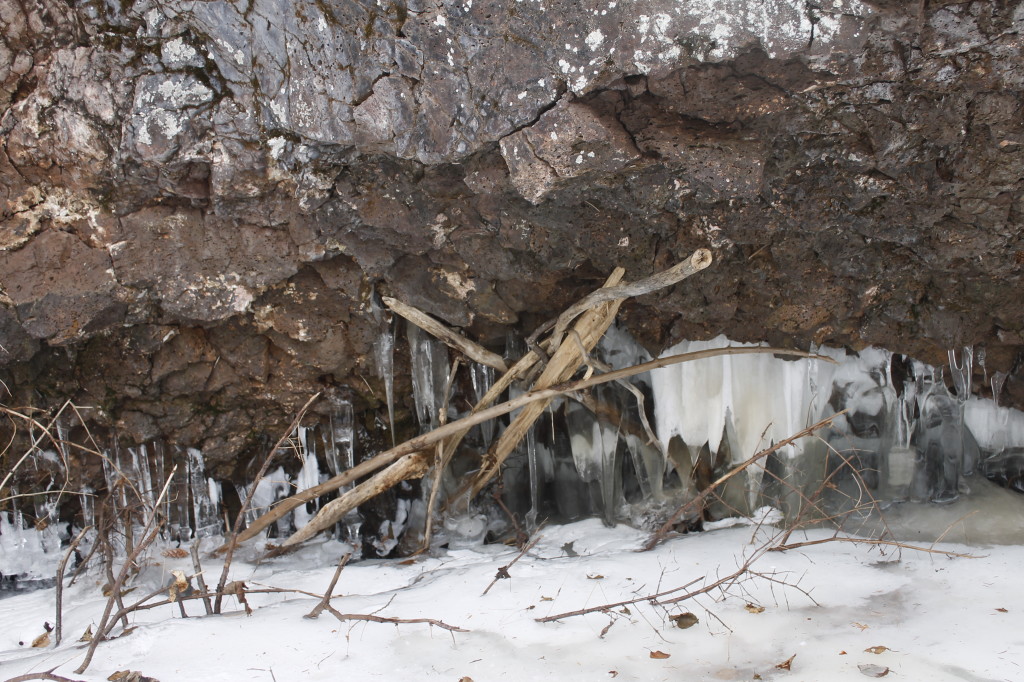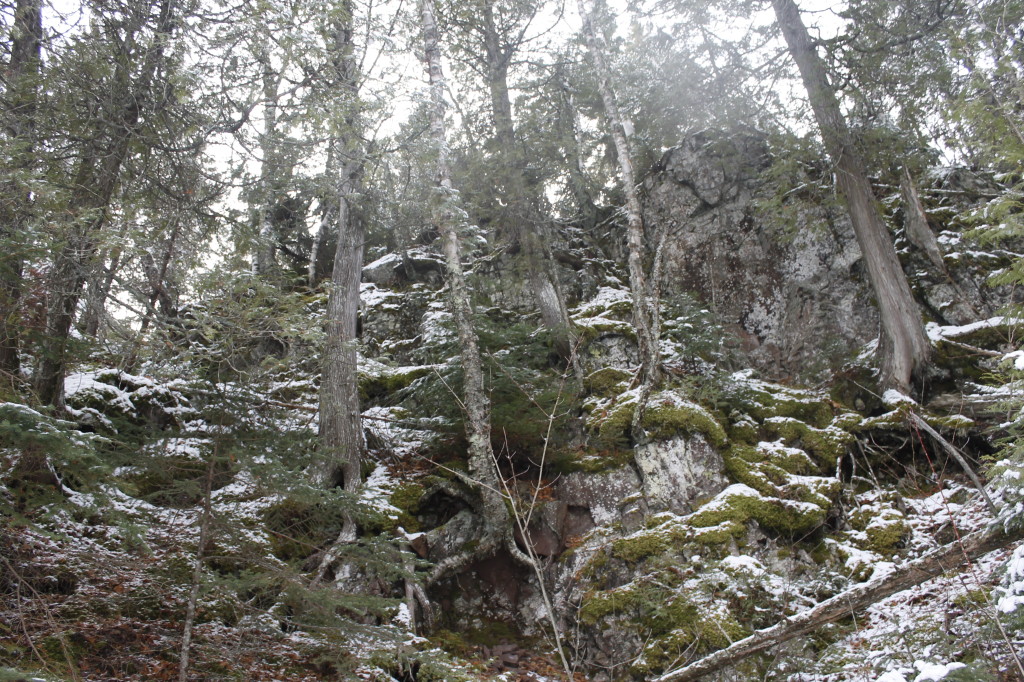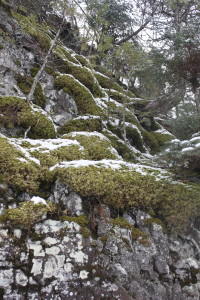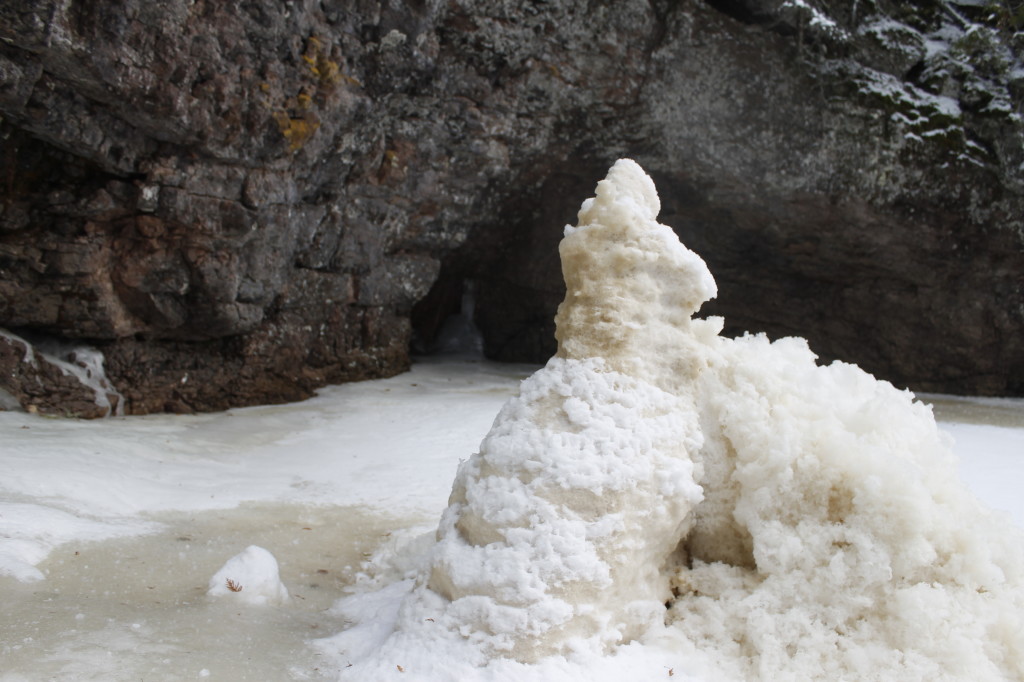My path was a narrow, windy one, closed in by thick stands of spruce and balsam fir.
On my right, 35 pounds of whitewater kayak hung off my shoulder blade, padded by a life jacket but an uncomfortable and awkward burden nonetheless.
To my right, the canyon dropped away, hiding the Onion River, which roared in the depths unseen. It was what I had come for. At least that’s what I told myself.
It would be good to know what I wanted, because, man, I had been carrying the kayak for a while now. Before that, I’d paddled it about five miles down Lake Superior, making slow progress in the short-hulled craft. It had been built for maneuvering in tight places, holding an edge going into rapids. Long distances over open water? Not so much.
The idea for this adventure had been kicking around in my head long before I set out of course. The summer before, I’d glanced at the 12-foot drop into the plunge pool, and thought it looked scary, but doable. Since that time. I’d climbed up the Onion River Falls, gone skinny dipping there, ice climbed the falls in winter (http://tomsonthemove.com/two-ice-axes-one-bike-no-car-good-times/), and even cross-country skied down the canyon, taking skis off for the sketchier drops.
But I hadn’t kayaked anything yet. Thus, I had obvious motivation to take on the next adventure. Better yet, I wanted to make it a doorstep adventure, meaning that I would eschew motorized transport between home and the adventure destination.
Why throw in the extra miles of kayaking, very slow kayak miles at that, when I could just drive to the parking lot at the base of the river and haul my kayak up?
It would have been too simple that way. I also don’t accept driving and flying as a matter of course when it comes to an adventurous lifestyle. Burning fossil fuel can be a necessary evil sometimes, or maybe just an evil which I can rationalize away in the face of an epic opportunity for adventure. However, when there comes an opportunity to go on an adventure without putting more pollution into our atmosphere, or enriching abusive oil corporations, I’m all for it.
We can lower our demands if we are not in such a hurry to get places. The road can be as exciting as the destination if we keep our eyes open for wonder just as there are all kinds of things that we miss driving by at high speed.
The sea caves on Lake Superior for instance.
After I biked down to the launch beach, I only needed to paddle a couple miles to come across some of these phenomenal openings in the basalt cliffs along the shore. These are probably only a quarter mile from Highway 61 as the crow flies, but they were a world away from all that when I bobbed the nose of the kayak beneath the overhanging ledges, listened to the slap of water echoing off the walls.
Some of the things I enjoy about these caves include that I can paddle backwards into one of them and let the walls create a frame for the Superior landscape. Miles of forests and cliffs stretch out along the shore until they recede at the horizon. The horizon often changes with distant fog banks and false islands. Much closer, I can admire the shimmery amygdaloids within the stones. These jewel-like nuggets are scattered throughout the igneous stone along Superior, a legacy of the ancient lava flow.
The caves hold wonders to match some of the most storied wonders of the North Shore, though I doubt even one-percent of the people who go on their long journeys to and from these places have any idea of how close they are to such an amazing destination.
It’s harder to write a rave review about the squadrons of pissed-off gulls living near the caves.
They dropped out of the air when I got near and went directly at my head. I flailed my paddle at them to fend them off. The gulls have chicks now, that look like dirty wads of cheeping drier lint. The parents are protective ones, and my kayak passing by provoked a keen sense of of stranger danger.
I had also been a target of aerial bombardment a week earlier when one attacker dropped a nasty payload that splattered against my sprayskirt. I should write a product endorsement: “It kept seagull crap off my legs!”
The worst part was I would have to go through the gauntlet again on the return trip. At that time, the wind picked up further out in the lake, presenting me with a dilemma, not unlike that of Scylla and Charybdis out of Homer’s Odyssey. I could avoid the wind and waves by staying closer to the rock walls but it would mean that I would once again become a ripe target for the squawking, aggressive birds.
I ran my boat aground near the mouth of the Onion River — about a mile from the caves. I took the time to eat some lunch and left some of the gear I wouldn’t need behind to pick up later.
I traded my floppy sea kayaking hat for an orange whitewater helmet, hauled the boat up to Highway 61 and looked both ways before I crossed. There was a lot of traffic, trailers and what have you bombing down the road in search of whatever kicks they had waiting for them. My destination was only about a mile walk, though it would be start as a steep climb.
The trail went passed the lower falls. People have run these fearsome drops in kayaks, one of which a writer on American Whitewater has identified as “Tears for Fears,” but that is above my skill caliber and risk tolerance right now.
Whether the upper canyon was within these categories remained to be seen.
I put my kayak down several times during the walk, trying to peer down into the canyon and get a sense of what I was up against. Mostly I looked for fallen trees. The narrowness of the canyon and the thick vegetation made it difficult to see anything, and sometimes scouting meant walking out on crumbly slopes above the abyss, reaching for support on dead trees with shallow roots.
The part of the canyon that really worried me were the narrows, where the canyon simultaneously squeezed and dropped, where the water roared through like exhaust through a rocket nozzle, dropping anywhere from 10 to 15 feet on a more that 45 degree angle. The water would slam into a wall. It seemed likely that I would too if I tried to go down the same way.
These sections came after the aforementioned 12-foot waterfall. That distance was intimidating to me, but I also remembered an experience from my time in Galway, Ireland six years ago when the kayak club guys pushed me over a bridge that was at least that high. Aside from a loose spray skirt and a boat full of water, the landing had gone just fine.
This particular drop was in an isolated pool, so if I ended up flipping out of my boat, I would be able to get to shore well before any downstream rapids.
The put in was worrisome, because I had to safely lower myself and my boat down a steep crumbling bank. I lowered myself on wet rock and loose dirt, then reached up as high as I could to grab the front of the boat. I could barely grasp it without toppling over backward into the river. I inched it forward gradually, taking care not to give it too much momentum and take both of us for a wild ride.
When I finally got the boat lowered, I placed it in a small eddy out of the main current. This was where I got in. I started in on attaching my spray skirt to the cockpit, though this was slow work considering that every couple of seconds I had to bat the water with my paddle in order to stay out of the current.
I had already rehearsed the moves, now it was time to see the execution. I paddled out against the flow, letting it whip my boat around as I braced with the paddle. There was the problem of the tree across the river, but I ducked under pretty much where I had planned to.
Whoops! Hitting that submerged rock hadn’t been part of the plan. I recovered and sank a couple solid strokes into the river before it dropped from under me.
The instant of pleasant weightlessness gave way to the gentle deceleration of the boat sinking into aerated water. The foam came up chest high and then I was out. A war whoop escaped my lips.
The next sections of river were far less dramatic. The low water meant that I was scraping rocks. At times, I used my hands as much as I used the paddle in order to crawl my way along the river bottom, refusing to admit that it just might have been easier to get out of the boat in places.
The rapids in the narrows could have been hellishly, difficult in high water, but in these conditions, they were more like sledding down steep, wet rocks. The water would pile up on one side of my boat and create a cushion between the wall and me, helping me steer away from the wall before I hit it. Still, I ended up pushing off one wall with my hand.
The excitement of the day was definitely the fast kayaking moves needed to get through the drops.
I loved that feeling when the current brought me toward the wall and I felt my body move with its own will to make the right moves (oh so much can depend on those right moves) and I thought, “I’ve got this.”

